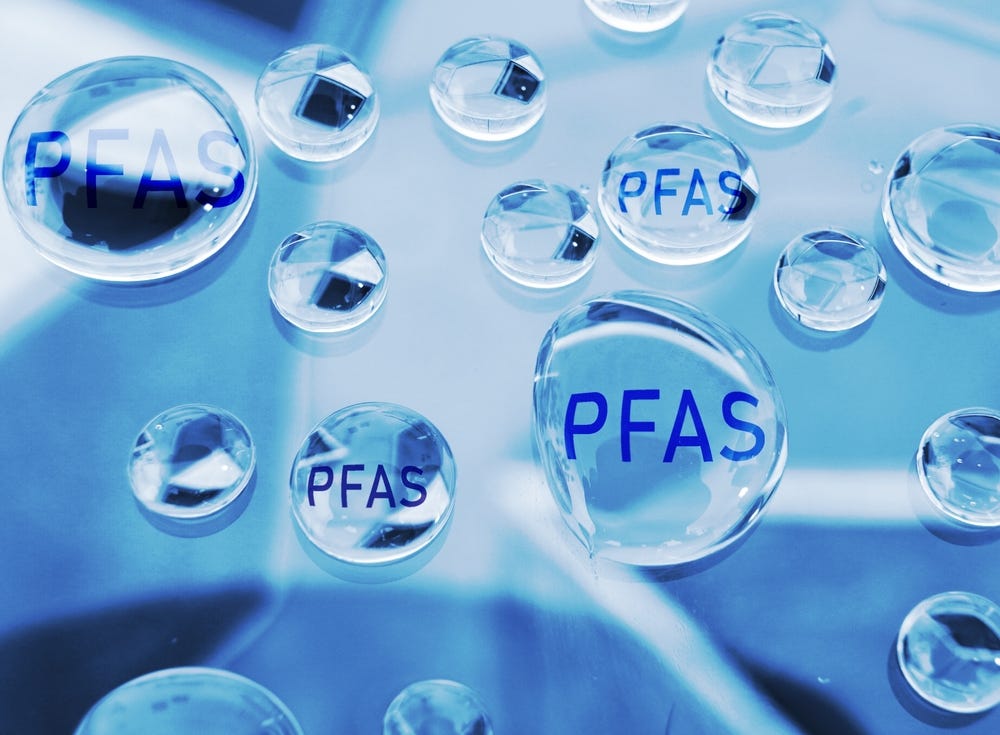New innovation destroys 90% of toxic ‘forever chemicals’ in water
A low-cost method using heat and activated carbon can break down 90% of toxic PFAS chemicals in water, researchers have found.

New method uses carbon and heat to destroy 90% of toxic PFAS chemicals from water without expensive tools or solvents. (CREDIT: Shutterstock)
New research is opening the door to a simpler, cheaper way to destroy harmful chemicals that threaten water quality and public health. Scientists studying per- and polyfluoroalkyl substances, or PFAS, are making progress in turning these toxic materials into harmless compounds using tools that are widely available and affordable.
PFAS, often called “forever chemicals,” are found in thousands of everyday products—from non-stick pans and waterproof clothing to firefighting foams and food wrappers. These chemicals don’t break down easily. They stay in the environment and the human body for decades, building up over time. Scientists link PFAS exposure to serious health problems, including increased cancer risk, lower fertility, and developmental delays in children.
New findings now show that it’s possible to break PFAS down using a simple mixture of heat and granular activated carbon, or GAC. This marks a major step forward in dealing with chemicals that many believed could never be destroyed.
Heat and Carbon: A Powerful Combo
A team from the University of Missouri has discovered that heating PFAS with GAC—an inexpensive, coal- or wood-based material often used in water filters—can break down over 90% of the chemicals. Unlike previous methods, which needed extremely high heat, high pressure, or costly solvents, this new method works at just 572 degrees Fahrenheit and normal pressure. That’s a temperature that a regular furnace can reach.
“You don’t need organic solvent or really high temperatures,” said Feng “Frank” Xiao, a professor who led the research. “Just heat the PFAS with granular activated carbon.”
In the study, the team tested five types of long-chain PFAS. These included three that are now regulated under federal water safety laws, one cationic compound, and a compound with 10 carbon atoms. The results showed that combining GAC with moderate heat caused the PFAS to break down into simple, non-toxic forms of fluorine.
Related Stories
Understanding the Science Behind the Breakdown
PFAS contain strong carbon-fluorine bonds, which make them hard to destroy. The process of heating them typically causes incomplete breakdown, creating products of incomplete destruction, or PIDs. These PIDs can still be toxic and dangerous.
Researchers studied what kinds of PIDs form under different conditions. In oxygen-free environments, PFAS broke down into perfluoroalkyl radicals—molecules that are still rich in fluorine. But in the presence of air, these radicals reacted with oxygen to form other oxygen-rich molecules. Some of these reactions happened only in narrow temperature ranges, showing how sensitive the breakdown process is.
One compound, carbonyl fluoride, only formed when potassium perfluorooctanesulfonate (K-PFOS) was heated in air under specific conditions. Scientists found no signs of tetrafluoromethane, a powerful greenhouse gas, from any of the PFAS tested.
Adding solid materials like GAC greatly improved the results. GAC, along with certain noble metals, helped convert PFAS into completely harmless substances. Some materials were moderately effective, while others didn’t help at all. But with GAC, the scientists saw mineralization rates above 90% in just one hour, without needing water or solvents.
“Once GAC is involved, the thermal degradation of PFAS occurs much faster, and the mineralization is more intense,” Xiao said.
A Safer, Simpler Way to Clean Up
This method doesn’t just work in a lab—it has the potential for real-world use. GAC is cheap and easy to find. It’s sold online, used in aquarium filters, and built into common home water filters. The equipment to carry out the process isn’t complicated either. Any local facility with a standard furnace could use this approach to clean contaminated waste.
“It’s not an expensive process, compared to reverse osmosis, and it can be done at local scale with a regular furnace,” Xiao explained.
This new technology could be especially helpful in rural or agricultural areas. Farmers often deal with PFAS in fertilizers, herbicides, and animal feed. These chemicals seep into the soil and groundwater, making their way into the food chain. The ability to destroy PFAS using affordable tools gives communities a way to protect their environment and health without needing complex systems.
“In the Midwest, we use a lot of herbicides and give animals a lot of pharmaceuticals,” Xiao said. “These substances can contain high amounts of PFAS. Through this new removal method, we can drastically reduce the compounds’ presence in our lives.”
A New Hope for Contaminated Water
For years, scientists have looked for a way to destroy PFAS completely. Until now, success meant using extreme heat—more than 1,200 degrees Fahrenheit—or special chemical treatments. These options are expensive and hard to scale up. Xiao’s research is changing that.
By studying the chemical changes at each stage of heating, his team discovered that PFAS degradation starts when carbon-fluorine bonds break, creating unstable fragments. In air, these fragments react quickly with oxygen. GAC plays a key role by speeding up this process and allowing it to happen at lower temperatures.
The breakthrough also shows that PFAS don’t always create harmful byproducts when broken down correctly. When scientists controlled the heating and used air, they avoided creating dangerous gases. That means this method isn’t just effective—it’s also safer for the environment.
Engineering a Better Future
“I teach environmental courses, and the students really care about the environment. They care about the water quality, and they care about our ecosystem,” Xiao said.
He hopes that this research will inspire more people to explore practical ways to clean up pollution.
“The real-world application of this discovery is that we can effectively and efficiently remove forever chemicals and other contaminants from our water,” he said. “This is the technology we need.”
With simple tools, some heat, and the right kind of carbon, scientists may have finally found a way to destroy forever chemicals—for good.
Note: The article above provided above by The Brighter Side of News.
Like these kind of feel good stories? Get The Brighter Side of News' newsletter.



